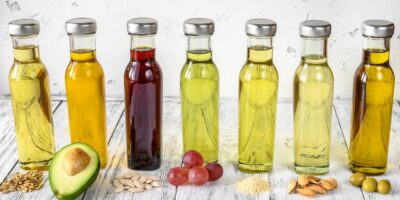When it comes to fruit and vegetables, follow this simple message—“eat a rainbow”—every day to ensure you make the most of the wealth of health-boosting nutrients that they contain. Fruit and vegetables are not only rich in vitamins, minerals, and other nutrients, they’re also packed with substances known as phytochemicals, which are believed to help protect against illnesses such as stroke, heart disease, some cancers, osteoporosis, and urinary tract infections, and protect against the effects of aging. Many phytochemicals are related to plant pigments—the substances that give fruits and vegetables their color. So a simple way to make sure you’re getting lots of different phytochemicals is to eat lots of different-colored fruit and vegetables, rather than just large quantities of, say, apples or carrots. And eating lots of different-colored fruit and vegetables will ensure you’re getting a good range of vitamins and minerals too.


1. WHITE


Onions, garlic, leeks, and the other members of the onion family, such as shallots, scallions, and chives (though chives aren’t white, of course!), all possess sulfur-containing compounds, which are thought to reduce the risk of cancer, lower cholesterol and blood pressure, and prevent the blood from becoming sticky, which can lead to strokes. These foods also contain antimicrobial properties that aid the body’s ability to fight infection.
Soybeans and soy products such as tofu and soy milk are rich in phytochemicals called isoflavones. These are precursors to active plant estrogens, which help to regulate female hormone levels and may reduce the risk of certain cancers, such as breast and prostate cancer. They have also been found to lower cholesterol, ease the symptoms of menopause and regulate bone renewal. Soy intake is suggested as one of the reasons why Japanese women have a lower prevalence of bone fractures even though they consume less calcium than Western women.
2. ORANGE & YELLOW


Carrots, squash, yellow and orange bell peppers, mangoes, and apricots are just a few of the yellow and orange vegetables and fruits that are rich in carotenoids. About 600 different carotenoids have now been identified, all of which possess powerful antioxidant activity, protecting tissues from cancer-forming agents. The body is able to convert some of these carotenoids into vitamin A, which is required for efficient immune function, normal growth and development of the embryo and fetus, and good skin health.
The carotenoid lutein, which gives corn its yellow color, is credited with promoting eye health. Research has shown that consuming foods high in lutein can help to reduce the risk of macular degeneration and cataracts.
3. RED


Tomatoes, pink grapefruit, watermelon, papaya, and pink guava are all rich in the red pigment lycopene, another member of the carotenoid family, which is thought to help fight against heart disease and some cancers. Cooking and processing, such as canning, breaks down the lycopene, making it easier for the body to absorb, so, unlike many nutrients, cooking and processing actually makes lycopene more readily available, making canned and pureed tomatoes a great choice. Another beneficial red pigment is betacyanin, which is found in beets. Besides being an antioxidant, it is believed to help detoxify the liver.
4. PURPLE & BLUE


Dark blue and purple fruit and vegetables such as blueberries, plums, black grapes, cherries, raspberries, and red cabbage are great sources of anthocyanins. These phytochemicals are powerful antioxidants that are believed to help protect the body against aging. They also help to promote collagen synthesis (collagen is an elastic-like material responsible for the scaffolding of body tissues) and strengthen blood capillaries. In addition, they have anti-inflammatory properties.
5. GREEN


The green pigment found in many leafy green vegetables is due to a substance called chlorophyll. It has a stimulating effect on red blood cell production and binds to cancer-forming agents in the gut, preventing them from being absorbed. Green vegetables such as broccoli, cabbage, Brussels sprouts, kale, and watercress are rich in the phytochemicals known as glucosinolates, which include indoles and isothiocyanates. These compounds are thought to play a crucial role in helping to protect against cancer.
EVERY COLOUR EVERY DAY
See how simple it is to eat a color from every group throughout the day. When you plan your meals, think ahead and pick a different colored fruit or vegetable from the one(s) in your previous meal and you’ll soon see how easy it is to keep your diet delicious and varied.
- Drink a glass of orange juice when you get out of bed.
- Scatter a handful of blueberries over your cereal.
- Eat a bowl of creamy onion soup for lunch.
- Serve a spinach and tomato salad with your dinner.
ALTERNATIVELY
- Drink a purple mixed berry smoothie for breakfast.
- Snack on a few dried apricots mid-morning.
- Eat a bowl of pasta with tomato sauce for lunch.
- Serve grilled chicken with stir-fried broccoli and scallions for dinner.





Leave a Reply